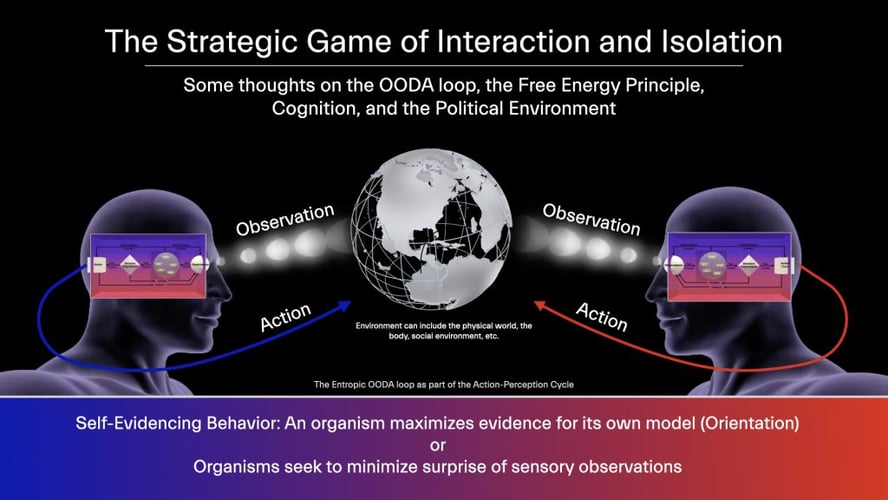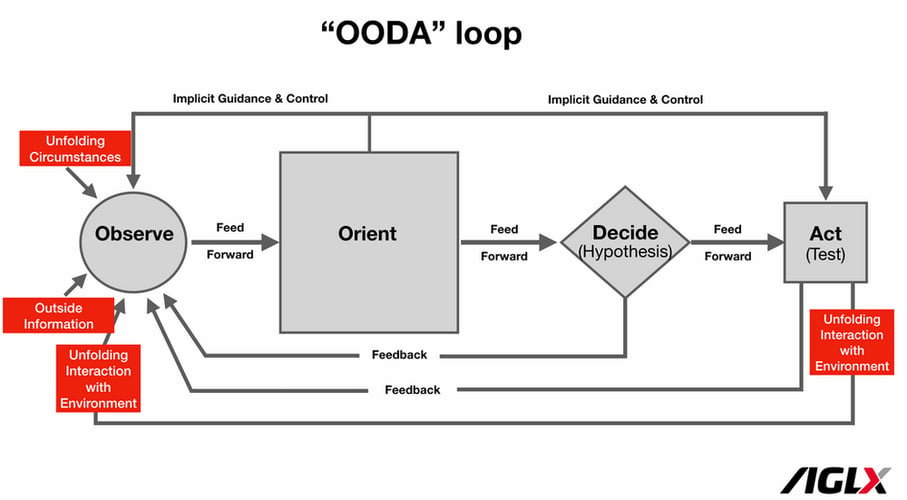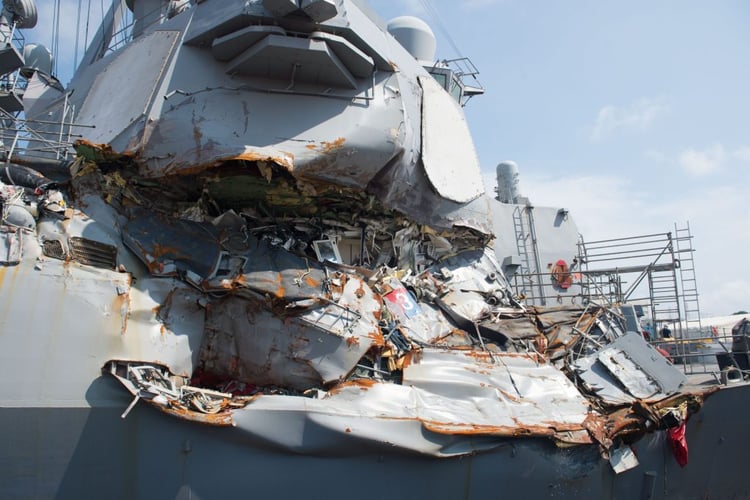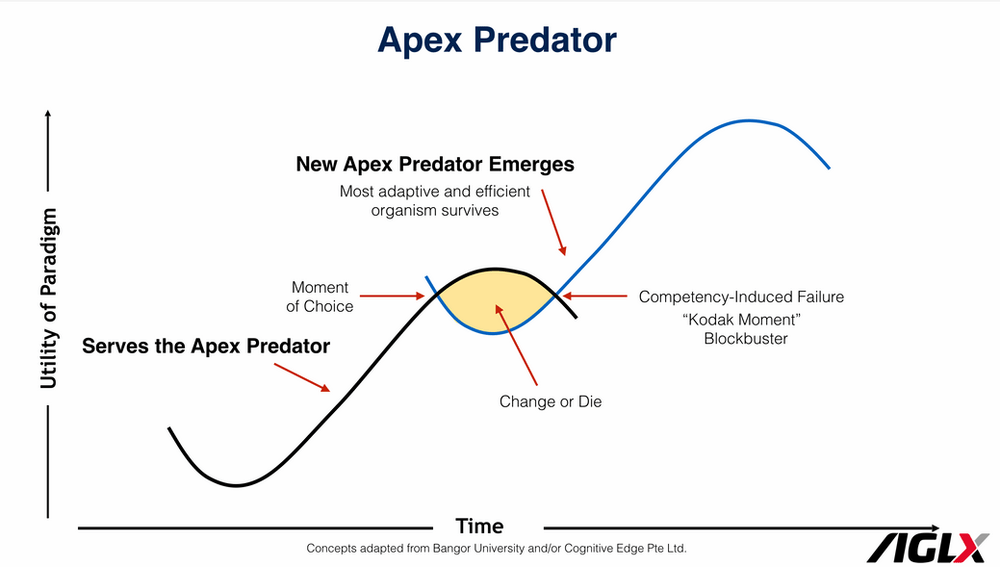
Naval aviators gathering this week in Reno, Nevada for the 2019 Hook Convention and the 50th anniversary of TOPGUN may learn a little about Apex Predators as a new way of thinking about safety.
The Apex Predator Theory was developed by Dave Snowden as a way to help explain how organizations fail as they become too competent with their current operating model. Removing the apex predator from an ecosystem, either through the emergence of a new apex predator such as orcas’ recent appetite for shark liver or the removal and reintroduction of wolves in Yellowstone National park, has consequences on the entire ecosystem. Snowden’s Apex Predator Theory serves as a metaphor to signal that all ecosystems evolve and that we must change or become irrelevant.
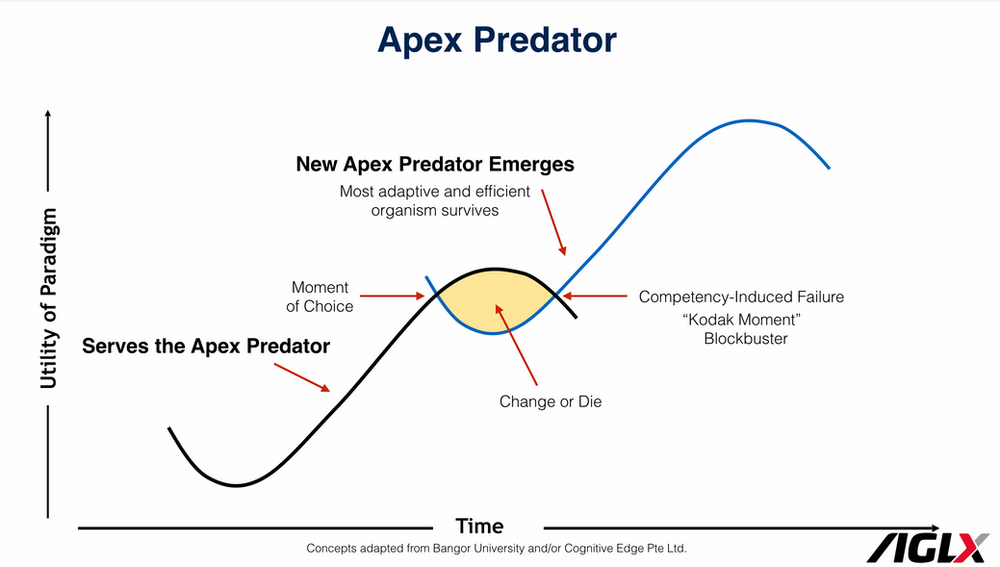
The overlapping area of the two-S-curves in the above graphic contain three points of interest. The first point is the “Moment of Choice” or exaptive point where those who see novelty in a new paradigm adopt the new approach. These are the early adopters. In the middle, organizations that recognize the new shift in their ecosystem have a choice to change or die. But it is the third point where too much confidence or competence in the current paradigm leads to failure.
This “competency induced failure” point—also known as a Kodak Moment named for the failed company that patented both the digital camera and SLR camera but remained fixated on film—is a point that naval safety leaders must avoid and instead should find ways to shift organizational thinking that moves naval safety up and to the right along the new S-curve.
During the April FVEY Safety Workshop, Dave Snowden gave me permission to present his Apex Predator Theory to safety leaders from five navies. I took some liberties as I overlaid several S-curves on top of the famous Naval Aviation mishap ski-slope to help leaders visualize the need for change. I also added some legacy systems thinking safety approaches and some of the newer, complexity-informed approaches to give leaders an idea on where they should look to evolve naval safety.
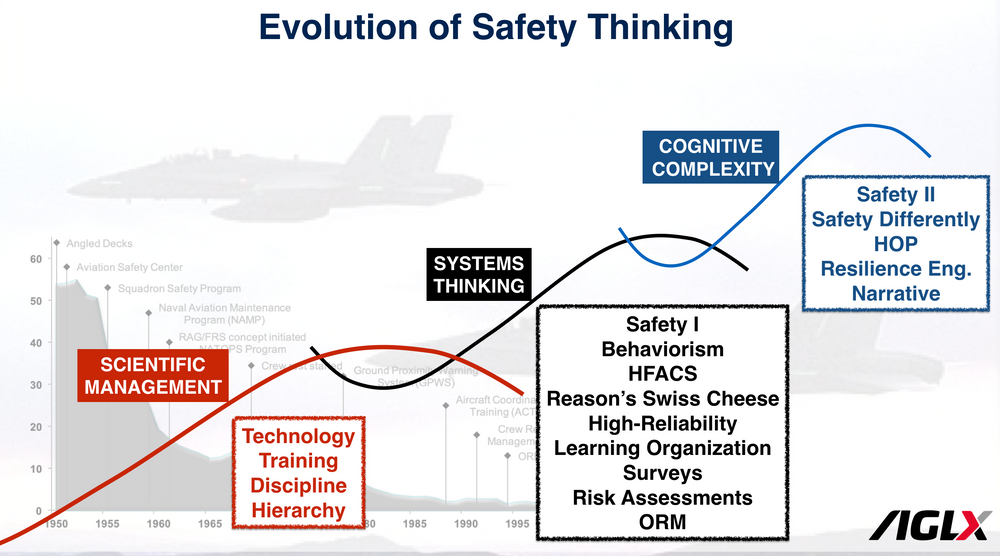
Dave recently presented his Apex Predator Theory to leaders at the Navy War College as a way to evolve naval strategy. Last week during the Navy’s Complexity Workshop, I presented Apex Predator Theory to help show that Safety is an Emergent Property of a Complex Adaptive System. In the audience was Professor David Woods, one of the core researches on Resilience Engineering, a cognitive complexity-based approach fit for naval safety.
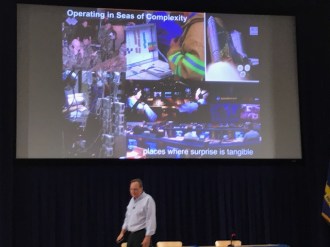

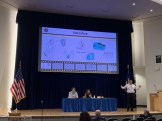
If you are at ‘Hook this weekend, please stop by and see what NAVSAFECEN has to say about the new direction of naval safety.
If you want to learn more about Apex Predator Theory, consider signing up for the Advanced Cynefin course in Plano, Texas or the OODA-Cynefin exploratory where we may examine Apex Predator Theory and the OODA loop.


